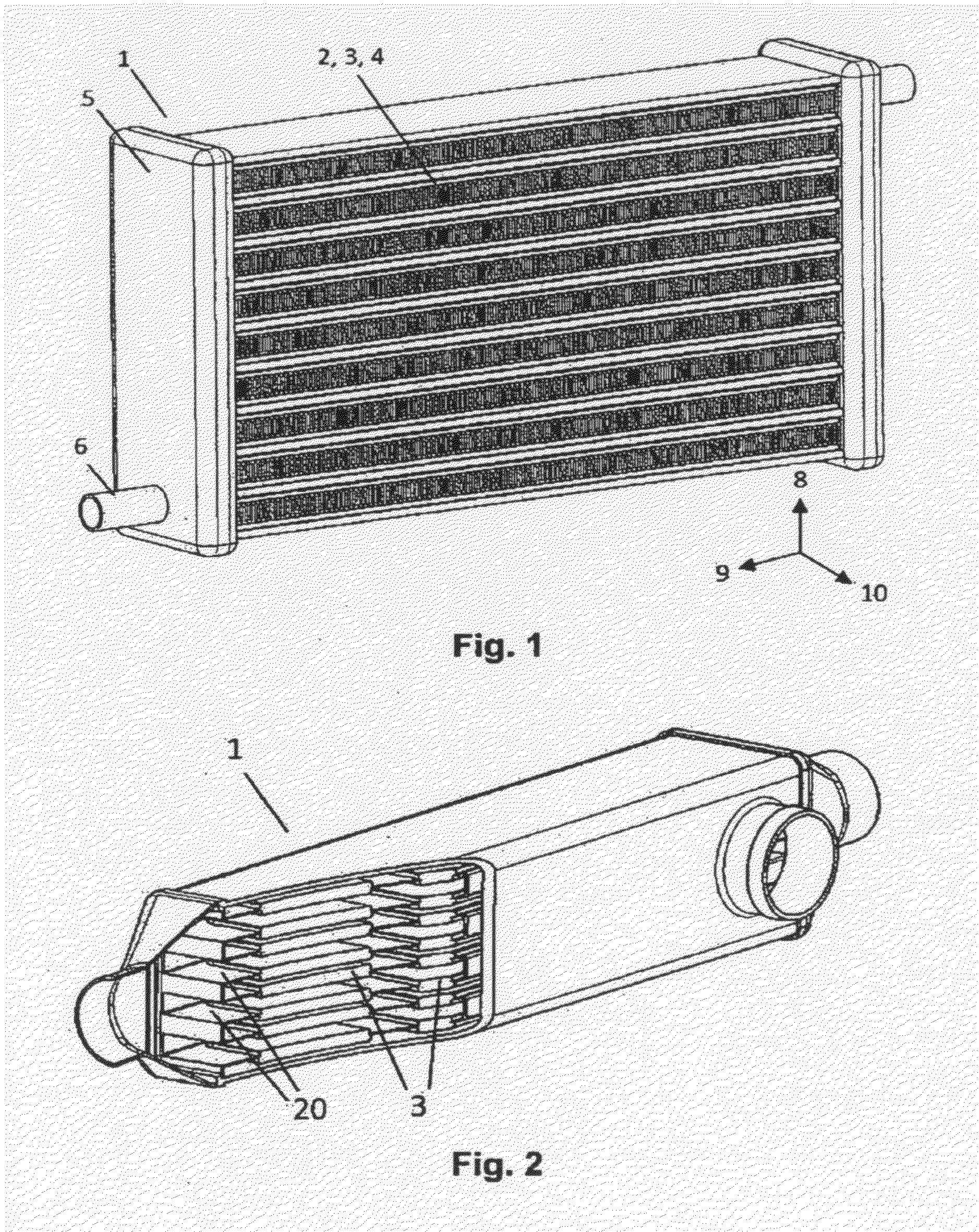Thermoelectric heat exchanger
a heat exchanger and thermoelectric technology, applied in indirect heat exchangers, lighting and heating apparatus, heating types, etc., can solve the problems of low cop value, inefficiency of heaters, and inability to use coolant-fed heaters for heating passenger cells. , to achieve the effect of reducing temperature difference, high heat transfer coefficient, and cost-effectiveness
- Summary
- Abstract
- Description
- Claims
- Application Information
AI Technical Summary
Benefits of technology
Problems solved by technology
Method used
Image
Examples
first embodiment
[0108]Casing 17 of TEM 3 is then made of a two-part or multi-part plastic (e.g., PP or PA). In other respects, this variant corresponds to the embodiment of the first embodiment variant described with reference to FIGS. 11 through 16.
[0109]Casing parts 17 may be extruded or injection-molded. The plastic may include heat-conducting additives such as graphite, ceramic or metal powder.
second embodiment
[0110]Casing 17 of TEM 3 is made of a two-part or multi-part plastic (e.g., PP or PA). In other respects, this variant corresponds to the embodiment of the second embodiment variant described with reference to FIGS. 17 through 20.
[0111]TE-active materials 14 and associated conductor materials 15 are introduced within casing parts 17 of a TEM 3. Casing parts 17 are connected to each other media-tight. Casing parts 17 may be extruded, injection-molded or compression molded.
[0112]In this specific embodiment, ribbing 4 of plastic casing part 1 of the TEM (as illustrated, for example in FIGS. 22 through 26) is metallic, preferably an aluminum or copper material. Ribbing 4 may be designed according to the publication DE 10 2008 059 737 and be connected to the plastic in the manner illustrated therein. Ribbing 4 is referred to as conducting element 4 in this publication. Instead of the ribbing-tube connection described therein, the present TE-HC invention is aimed at a connection between a...
PUM
 Login to View More
Login to View More Abstract
Description
Claims
Application Information
 Login to View More
Login to View More - R&D
- Intellectual Property
- Life Sciences
- Materials
- Tech Scout
- Unparalleled Data Quality
- Higher Quality Content
- 60% Fewer Hallucinations
Browse by: Latest US Patents, China's latest patents, Technical Efficacy Thesaurus, Application Domain, Technology Topic, Popular Technical Reports.
© 2025 PatSnap. All rights reserved.Legal|Privacy policy|Modern Slavery Act Transparency Statement|Sitemap|About US| Contact US: help@patsnap.com



